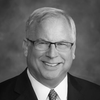The pictures from the Philippines were hard to watch. The devastation from Typhoon Haiyan is widespread, but, as in many natural disasters, older people have been disproportionately hurt. More than a million older Filipinos have been affected or displaced. In the regions where victims' ages are known, one out of three people who died were over the age of 60, even though they represented less than one tenth of the population.
When the typhoon struck, leaders in aging from around the world were gathered in Shanghai for a meeting of the International Association of Homes and Services for the Aging. As we watched events unfold on television,HelpAge, a leading international charity focused on the elderly, was on the ground in the Philippines immediately, reaching out to older people and their families with its local partner, the Coalition of Services for the Elderly.
HelpAge's Director of Strategic Development, Mark Gorman, was attending the conference in Shanghai and briefed us on the special challenges facing older people, including the fact that significant numbers of older people in the Philippines live alone; three-quarters are widows. The older and poorer they are, the more likely they are to be isolated and vulnerable.
Unfortunately, supposedly once-in-a-lifetime disasters are happening with alarming regularity. Older adults were 65 percent of the victims of the Japanese tsunami and about half of the victims in Hurricane Sandy. At Grantmakers In Aging (GIA), a national association of funders dedicated to improving the experience of aging, we know these challenges all too well. In 2005, we raised $4.87 million to rebuild services for older adults following Hurricane Katrina (when older adults made up 70 percent of the victims.)
So why are disaster-related death rates so much higher for older adults?
- Not moving out of harm's way: Being unable to move quickly out of harm's way can become a terminal diagnosis. Forty-two percent of Americans over 65 have some kind of functional limitation could be a hindrance in a disaster.
So how to keep this nightmare from playing out again and again?
- Individual responsibility: Planning for a disaster requires emotional courage, resourcefulness, and thinking about the unthinkable. What are plans A, B, and C? Where to go? What is packed? Who will have trouble traveling? Who can help? It doesn't get any easier when a storm is bearing down. Thinking through past disaster scenarios can hone your planning. Google Docs could be a place you keep copies of important papers, phone numbers, and lists of medications. Talk to your doctor about getting an extra three week supply of medication to keep on hand. Check out this excellent disaster preparedness checklist from the American Red Cross.
- Individual Training: U.S. municipalities train individuals to help in disasters, including going door-to-door and helping formal relief staff with their work. This training increases understanding of what happens during and after a disaster and how to become part of the team. Older adults and those from the disability community play an active and important role in this work.
The world is made smaller by these disasters. The boundaries between the heartbreak brought by a typhoon in the Philippines and the tornadoes in the American Midwest are really non-existent. We need to give of ourselves, our organizations, and our governments, to reach across boundaries and help alleviate the terrible suffering and stem the loss of life as we look ahead - together -- at a future of disaster preparedness and response that will shelter the vulnerable and help each other through the storm.
There are many wonderful charities working to help the victims of Typhoon Haiyan, but if you would like to focus on older people, please consider a donation to HelpAge International. In the U.S., donations can be made through https://donatenow.networkforgood.org/helpageusa. The needs will remain long after the initial emergency work is completed, so please be generous.
This post was co-authored by Jennifer W. Campbell, PhD, MSW, a consultant to Grantmakers In Aging who also served as Director of GIA's Hurricane Fund for the Elderly after Hurricane Katrina. She teaches at the Graduate School of Social Work and Social Research at Bryn Mawr College.
